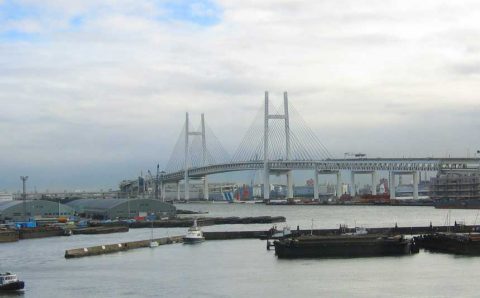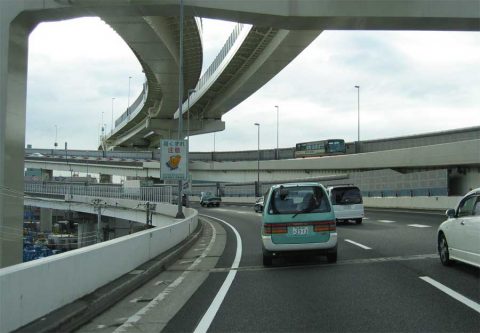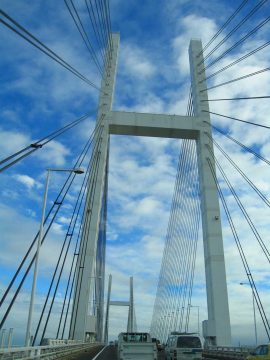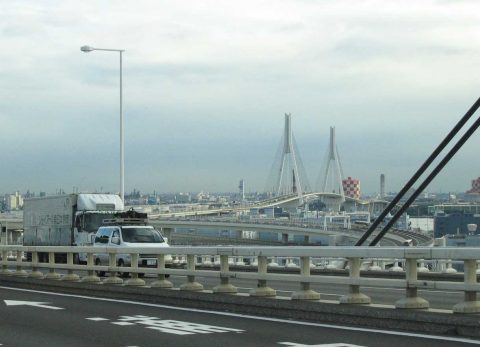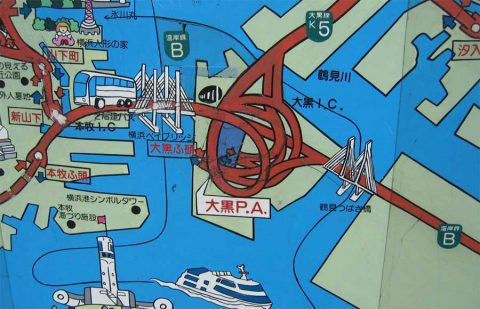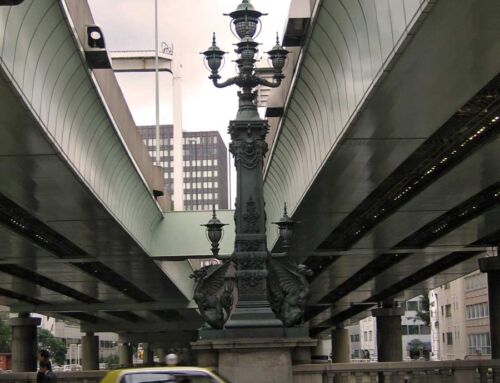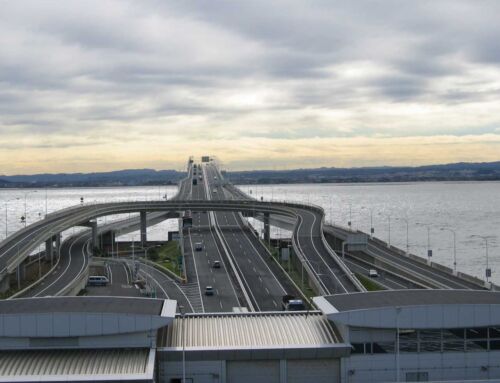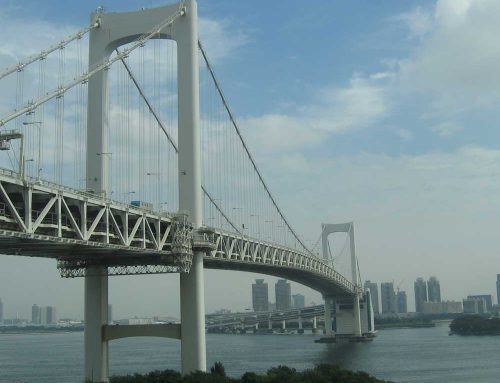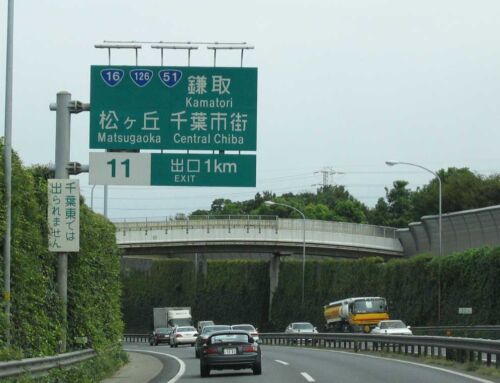Yokohama is about 30 miles south of Tokyo and is Japans’ second largest city. The two cities, the nations’ largest, were connected by one freeway until the late 1980s. The government could not figure out where to put a reliever route, so in true Japanese fashion, they built one in the coolest way possible – my making a bunch of islands connected by cable stayed bridges, tunnels, and 10-story high freeway stacks out in the bay – click the images for bigger versions.
In between the two bridges, on a manmade island in the bay, there is a rest area (with a McDonalds!) in the midst of yet another helix interchange. This interchange spirals traffic in a “spring” 5 levels high with ramps eminating out to three directions (to the B-route and the K5 freeway) plus a ramp to ground level to access the rest area.
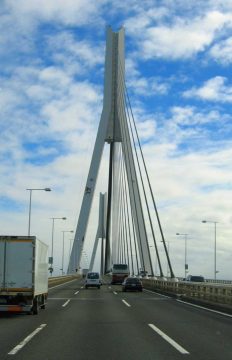
The Tsurumi Tsubasa Bridge opened in 1994 and it’s the longest single plane cable stayed bridge in the world. (until San Francisco’s new bay bridge East Span opens, I think) It gives view of the impressive 20km long Kawasaki/Yokohama skyline to the west, and of the open bay and container ships to the east.
This bridge is the first example of this particular style of tower design on cable stayed bridges. The bridge towers and landscape in the area were designed by Motomi Kawakami, who is more famous for designing furniture. That’s right, the Tsurumi Tsubama Bridge towers were thought up by a furniture guy. Think of ottomans next time you’re on the Charles River Bridge in Boston.

